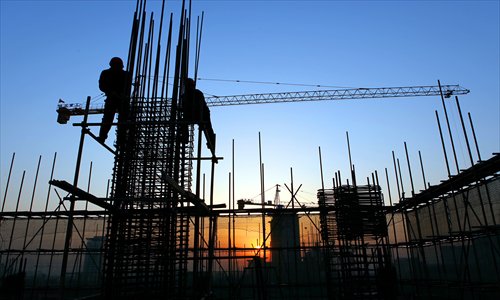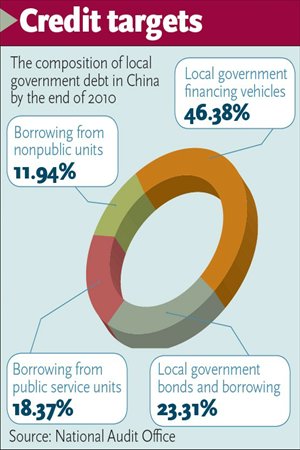Drowning in debt?

Workers band steel rods at a construction site in Rizhao, Shandong Province. Photo: IC
Editor's note:China's ongoing construction boom promises to raise living standards for millions of citizens. But the nationwide spending spree which has funded countless infrastructure projects has also swallowed billions of yuan from local government budgets. Just how much have local authorities borrowed? Will they be able to pay off their loans? To explore these questions, the National Audit Office (NAO), the country's highest accounting authority, announced in late July that it would launch a sweeping inspection of local debt levels and borrowing habits. The Global Times reports on this issue as it unfolds.
While China's local governments construct highways, railroads and other expensive infrastructure projects to bolster their contribution to GDP, they are accumulating tens of billions of yuan in debt along the way, a trend which many observers say could spark a crisis to the world's second largest economy.
China's highest leaders have already been alerted of concerns. On July 28, the country's top accounting agency said it will launch an investigation into local borrowing nationwide.
"At the request of the State Council, the National Audit Office (NAO) will conduct audits on government debt," the body announced in a statement posted on its official website.
"By conducting a large-scale, authoritative and effective audit, the central government wants to find out how much debt has been accumulated and then make decisions on how to control local borrowing," Chen Naixing, a research fellow with the Institute of Industrial Economics at the Chinese Academy of Social Sciences, told the Global Times.

Graphics: Global Times
News of this audit has garnered widespread attention since its initial announcement, with many economists saying that this move highlights the new leadership's determination to gauge local debt loads before the situation spirals out of control.
"This is a necessary step State authorities have to take in order to rein in soaring local government debt," Chen added.
Speculations emerged Sunday that the NAO has already found local debt ratios to be less than 100 percent. However, representatives from the country's top accounting body told the Global Times that its current audit is still in-progress and has yet to yield such results.
The central government initiated a similar review of local accounts in 2010 which saw the NAO audit provincial-, city- and county-level governments. It later published a report revealing that local government debt reached 10.7 trillion yuan ($1.75 trillion) by the end of 2010, an amount equal to 27 percent of China's GDP during that year.
The NAO's latest audit will extend to township-level governments and the central government, while also looking again at the governments it reviewed in 2010, according to recent reports in the 21st Century Business Herald.
Zuo Xiaolei, chief economist at China Galaxy Securities, told the Global Times that the central government has enlarged its focus to ensure a higher level of information transparency.
"Townships also took on large financial burdens to fund the development of infrastructure projects," Zuo said. "The information this audit will collect can enrich the central government's understanding of local authorities."
In July, the International Monetary Fund (IMF) estimated that China's total public debt load had swelled to exceed 45 percent of its GDP in 2012, 15 percentage points below the internationally accepted warning level of 60 percent.
Prior to its latest nationwide inspection, the NAO issued a report in June which showed that 36 local governments held loans totaling 3.85 trillion yuan by the end of 2012, a 12.94 percent rise from the end of 2010.
"Out of the 36 regional governments that the NAO has audited over the past two years, four provinces and eight provincial capitals have seen their debt loads increase by more than 20 percent. And nine provincial capitals have a debt ratio of more than 100 percent, with the highest hitting 189 percent," an official from the office was quoted as saying in a recent report by news portal china.com.cn.